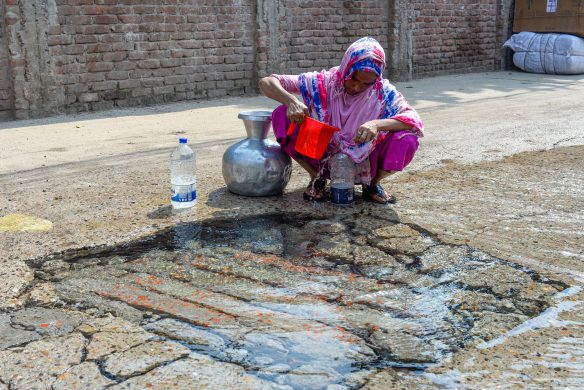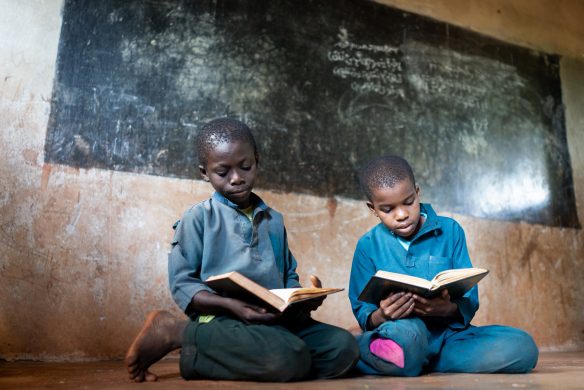Chile tager nu et vigtigt nationalt skridt i kampen mod klimaforandringer. Regeringen forventes i denne uge at vedtage en skat på kulstofudledning, hvilket er den første af sin slags i Sydamerika.
Det skriver nyhedsportalen CleanTechnica mandag.
SANTIAGO, 1 September 2014: This week, the government of Chile holds a final vote on its first carbon taxation scheme, also the first in South America, a measure to make fossil fuel generators pay for emitting greenhouse gases.
The Chile carbon tax is part of a larger program of wide-ranging tax revisions introduced by the country’s popular center-left president Michelle Bachelet, partly to enact social reforms promised in her recent election.
Chile’s House of Representatives passed the tax bill in May and sent it along to the Senate, where minor changes were made. These included broadening the tax extension from diesel-powered vehicles to all vehicles. Now the House re-examines the bill, and in all likelihood it will pass next week.
Skatten skal gavne uddannelsessektoren
The new Chile carbon tax on fossil fuel generation will start in 2017 at a rate of five US dollar (ca. 28 DKR) per ton of CO2. The rate will stay in place throughout the president’s term in office.
Though constitutionally Bachelet cannot be elected again without a term off, the next government can extend the measure, change the price, or establish a complementary voluntary trading system to continue or expand the benefits.
“It is quite a significant tax for the Chilean economy,” says Gariazzo Rodrigo Pizarro, head of the division of environmental economics in the Chilean government.
Chile is expected to use most of the resulting funds for education, which citizens perceive as a bridge over the deep gap between the nation’s poor and rich, rather than plowing the money directly back into the country via across-the-board or fee-and-dividend options.
One of the reasons for Batchelet’s election was deep student disapproval of and demonstrations against the preceding government about its retrograde education policies.
The bill includes several other environmental reforms to reduce air pollution and limit climate change: an imported vehicle levy and taxes on smog particle and chemical (nitrogen oxides, sulfur dioxide) emissions. Pizarro believes the Chile carbon tax will also help the country invest in renewable energy and generate a greener economy.
Grønne tiltag i Latinamerika
South America’s first solar thermal plant has already begun construction in the Atacama Desert to the north.
With substantial other deserts and thousands of miles of coastline, Chile also has large potential for solar, wind, and possibly ocean and geothermal energy. Since the country only supplies around 30% of its own domestic energy, renewables could put a sizable dent in fuel imports.
Elsewhere in Latin America, Mexico initiated the first carbon tax in January on fuels. It does not tax the full carbon content of fuels, but rather taxes the additional emissions over natural gas. Different fuels have different rates.
This averages out to about 3.50 US dollar (ca. 20 kroner) per ton and covers approximately 40% of the country’s total GHG emissions.
Brazil has no national program yet, but it has launched an Emissions Trading Scheme of the Businesses for Climate Platform. The ETS held its first auction of allowances in March 2014.
Costa Rica has been very proactive in terms of environmental protection and reining in emissions on a nationwide basis.
In 2013, it used reductions in-country to establish a Voluntary Domestic Carbon Market, a national market for buying and selling carbon credits among businesses, organizations, and individuals. It opened an environmental bank (BanC02) in the same year that focuses on climate change mitigation and low carbon development.
Since 1997, through another carbon reduction program, Payments for Ecosystem Services, Costa Rica’s forests have expanded in coverage from less than 20% to half the country, reversing a pattern of deforestation. By 2021, Costa Rica hopes to be a carbon-neutral nation.
Globally, only about 6 GtCO2, or about 12% of annual GHG emissions, are under some sort of regulation. These have been placed by about 40 nations and a growing number of sub-national jurisdictions.
“Despite the dire state of the international carbon market,” says the 2014 World Bank carbon assessment, “regional, national, and sub-national emissions trading schemes and crediting approaches continue to develop.”
“Chile is not a great contributor to greenhouse gas emissions, but we are very vulnerable. It is in our national interests to see significant commitments in terms of climate change,” says Pizarro.
As early as next week, Chile will enter the expanding group of nations with carbon-reduction schemes in place. Chile has voluntarily committed to reduce greenhouse gas emissions 20% by 2020 based on 2007 levels, and the new carbon tax should definitely help.
Læs nyheden på nyhedssitet CleanTechnica














